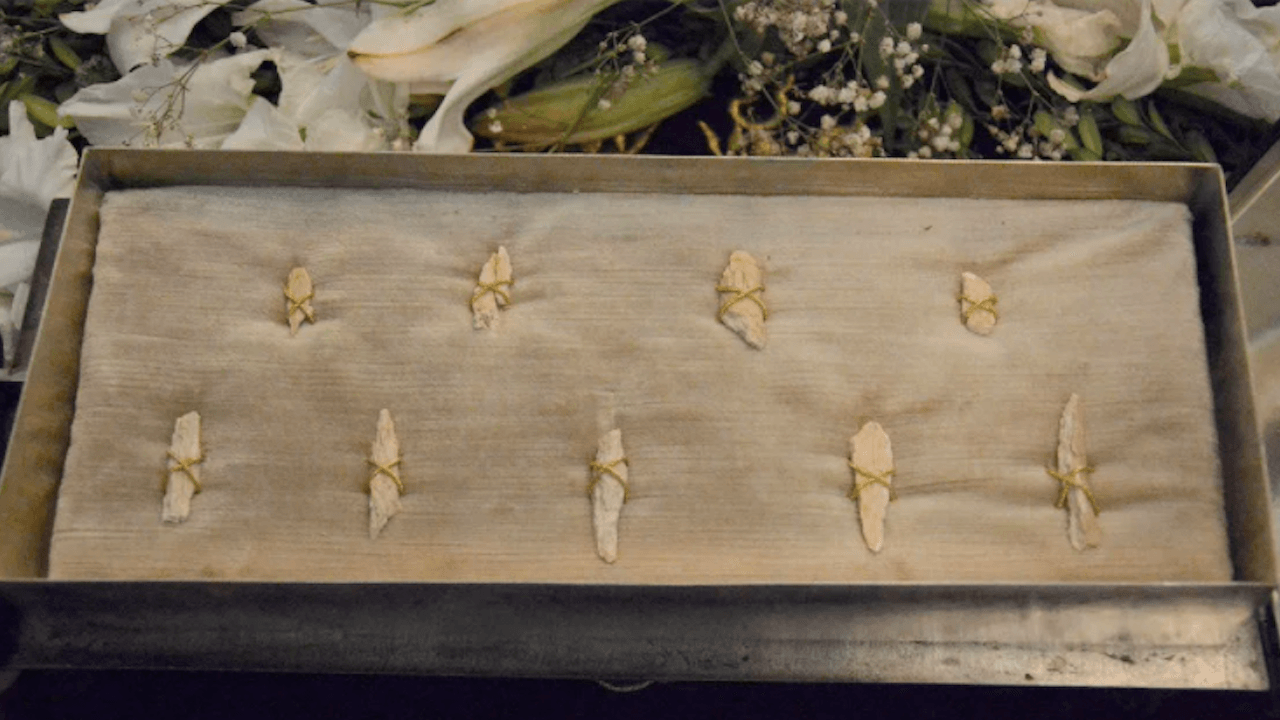Vatican issues new rules for relics in saint-making process
Vatican issues new rules for relics in saint-making process
https://religionnews.com/2017/12/16/vatican-issues-new-rules-for-relics-in-saint-making-process
The instructions explicitly rule out selling the hair strands, hands, teeth & other body parts of saints that often fetch high prices in online auctions.
VATICAN CITY (AP) — The Vatican’s saint-making office has updated its rules governing the use of relics for would-be saints, issuing detailed new guidelines Saturday that govern how body parts & cremated remains are to be obtained, transferred & protected for eventual veneration.
The instructions explicitly rule out selling the hair strands, hands, teeth & other body parts of saints that often fetch high prices in online auctions. They also prohibit the use of relics in sacrilegious rituals & warn that the church may have to obtain consent from surviving family members before unearthing the remains of candidates for sainthood.
Bodily relics are an important part of Catholic tradition, since the body is considered to be the “instrument” of the person’s saintliness. Beatification & canonization Masses often feature the relic being ceremoniously brought to the altar in an elaborate display case & allowing the faithful to publicly venerate the new blessed or saint for the first time.
Officials said the new guidelines were necessary given some obstacles that had arisen since the rules were last revised in 2007, particularly when surviving relatives & church officials disagreed.
One current case before a U.S. appeals court concerns a battle over the remains of Fulton Sheen, an American archbishop known for his revolutionary radio & television preaching in the 1950s and 1960s.
Sheen’s niece went to court to force the archdiocese of New York to transfer Sheen’s body from the crypt of St. Patrick’s Cathedral to Peoria, Illinois, where Sheen was born, ordained a priest & where his sainthood cause has been launched by Peoria’s bishop.
The New York archdiocese refused & appealed a 2016 lower court ruling in favor of the niece. A decision from the appeals court is expected soon.
Monsignor Robert Sarno of the Vatican’s Congregation for the Causes of Saints said it’s impossible to know what difficulties could complicate a saint-making case or whether the new guidelines might have helped avoid the legal battle over Sheen.
But Sarno said the Vatican believed the updates were needed anyway to provide bishops around the world with a detailed, go-to guide in multiple languages to replace the Latin instructions that provided only general rules to follow.
New to the protocols is an article that makes clear that bishops must have the “consent of the heirs” in places where the bodies of the dead legally belong to surviving family members or heirs.
The revised instructions lay out in detail how a body is to be unearthed, saying it must be covered with a “decorous” cloth while a relic is being taken or authenticated, & then re-buried in clothes of similar style.
They also make clear that the bishops involved must agree in writing to any transfer of remains & call for absolute secrecy when a body is unearthed & a relic taken for eventual veneration.
The document repeats church teaching that relics from candidates for sainthood can only be venerated publicly once they've been beatified, the first step to possible sainthood, & not before.
The guidance explicitly allows for cremated remains to be used as relics. For most of its 2,000-year history, the Catholic Church only permitted burial, arguing that it best expressed the Christian hope for resurrection. But in 1963, the Vatican explicitly allowed cremation as long as it didn’t suggest a denial of faith about resurrection.
The new instructions only cover the so-called “first class” of relics from the actual body of the saintly candidate. The church also recognizes second- & third-class relics, such as clothes & other materials that came into contact with the would-be saint’s body.





